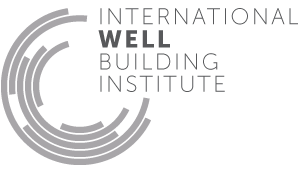WELLNESS – A Complex Issue
Comprehensive and interdisciplinary approaches are necessary to meaningfully address the complex issues of human health and wellbeing. A narrow focus on select aspects of health is inadequate to the task. Many factors of the physical environment have a significant impact on day-to-day health and productivity, but it is often the interactions between multiple environmental factors that matter most. A growing body of research supports these claims but until recently, little had been done to translate research into practice. The WELL Building Standard draws from multiple disciplines of scientific study, and presents an integrative approach that reinvents the built environment around its occupants, transforming the places we live, work and learn into systems intended to promote and improve human health and wellbeing.
Interactions Between Humans and the Built Environment
Traditional healthcare delivery systems primarily focus on addressing health after people have already become sick. With rising costs and the increased burden of chronic diseases such as diabetes, cardiovascular disease and cancer, people are turning to more lifestyle-oriented and preventative approaches to health. The WELL Building Standard is founded on the understanding that facets of our environment interact with personal, genetic and behavioral factors to shape our overall health and wellbeing. WELL recognizes that many unconscious behaviors are dictated by external cues and thus, it has carefully considered interactions between humans and the built environment that not only shape our physical health but also our behavior.
The Basis for the WELL Building Standard
The WELL Building Standard v1.0 is a product of seven years of research and development consulting with an expert peer review process encompassing a scientific, practitioner, and medical review. The WELL Building Standard was developed by integrating scientific and medical research and reviewing existing literature on environmental health, behavioral factors, health outcomes and demographic risk factors. By compiling leading practices in building design and management and referencing existing standards and best practice guidelines set by governmental and professional organizations, WELL works to harmonize and clarify existing thresholds and requirements. Where important issues have not been adequately addressed by the literature, the WELL Building Standard relies on expert consultation as the basis for defining performance requirements.
WELL is largely performance-based; in most cases, specific, measurable thresholds are provided that must be met. However, for some strategies, specific metrics have not yet been established, but strong, causal evidence suggests there are benefits to implementation.
Research shows that wellness can be a very personal experience, so the WELL Building Standard is designed to comprehensively cover the various individual needs of building occupants while also building a common foundation for measuring wellness in the built environment.
WELLographies™
A rich body of research supported the development of the underlying concepts and requirements of the WELL Building Standard. The content of the research will be available in published WELLographies. The WELLographies will provide the content and references for all main topics that constitute the WELL Building Standard. WELLographies cite the major regulatory guidelines and relevant medical and scientific literature on the topics covered.
Acknowledgements
We would like to thank all parties involved in the review of the WELL Building Standard and the supporting WELLographies. The WELL Building Standard has been reviewed by leading scientists, practitioners from the building industry and physicians from leading medical institutions.
Scientists were consulted to help prioritize the factors that contribute to wellness. In order to assess the applicability of WELL in practice, building professionals and other stakeholders were asked for input. We give special thanks to CGI, USGBC, ILFI, GBCI and CBRE who have given institutional support for our efforts.
With gratitude and excitement, we also acknowledge our collaboration with the Mayo Clinic Center for Innovation to jointly operate the WELL Living Lab, which will be the first lab exclusively committed to research, development and testing of both new and existing innovations designed to improve the health and wellbeing of individuals as they live and work within built environments.
We are especially grateful for the support of Cleveland Clinic Wellness over the last few years. The organization has been an inspirational example of the effect that wellness policies can have on the health and wellbeing of the staff of an institution. Under the leadership of Dr. Michael F. Roizen, Cleveland Clinic Wellness has conducted a review of the WELL Building Standard and WELLographies.
A complete list of reviewers can be found in Appendix G and at www.WELLCertified.com.
